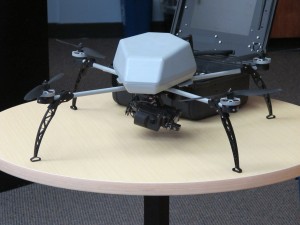Sastry said unmanned drones can be used by civilians for farming, fire control in remote areas, pipeline monitoring and other safety-related tasks.
"This is really catching up to what is already a reality in several places," Sastry said, referring to the recent testing of unmanned vehicles by companies such as Google on roads and highways. "So I'm delighted the FAA is having this competition, and I certainly hope California will be in the vanguard."
He said technological concerns regarding use of mixed airspace can be overcome.
Concerns Over Privacy
But civil rights groups are concerned about the potential for invasion of privacy by agencies flying drones.
"Privacy concerns are real, and I think they do need to be addressed," Sastry said.
The City of Berkeley is considering a ban on drones, citing privacy concerns.
Last February the Alameda County Sheriff's Office sought approval from the Alameda County Board of Supervisors to use more than $31,000 in federal funds to help pay for a drone.
Attorney Linda Lye with the ACLU of Northern California told KQED last October she was concerned drones would make it easy to do mass surveillance of citizens.
"We're concerned about the comprehensive stockpiling of detailed information about where people go, when they do it, who they meet with," Lye said. The decision to buy a drone merits a public debate and a vote by elected officials, she said.
Growth Potential
Sastry's students stand to make money manufacturing drones. The FAA estimates 7,500 nonmilitary drones will be in the air within five years, and calls drones "the most dynamic growth sector within the aviation industry."
The untapped civilian market is estimated in the billions, and the Teal Group estimates that about $89.1 billion will be spent on unmanned aircraft systems over the next 10 years.
